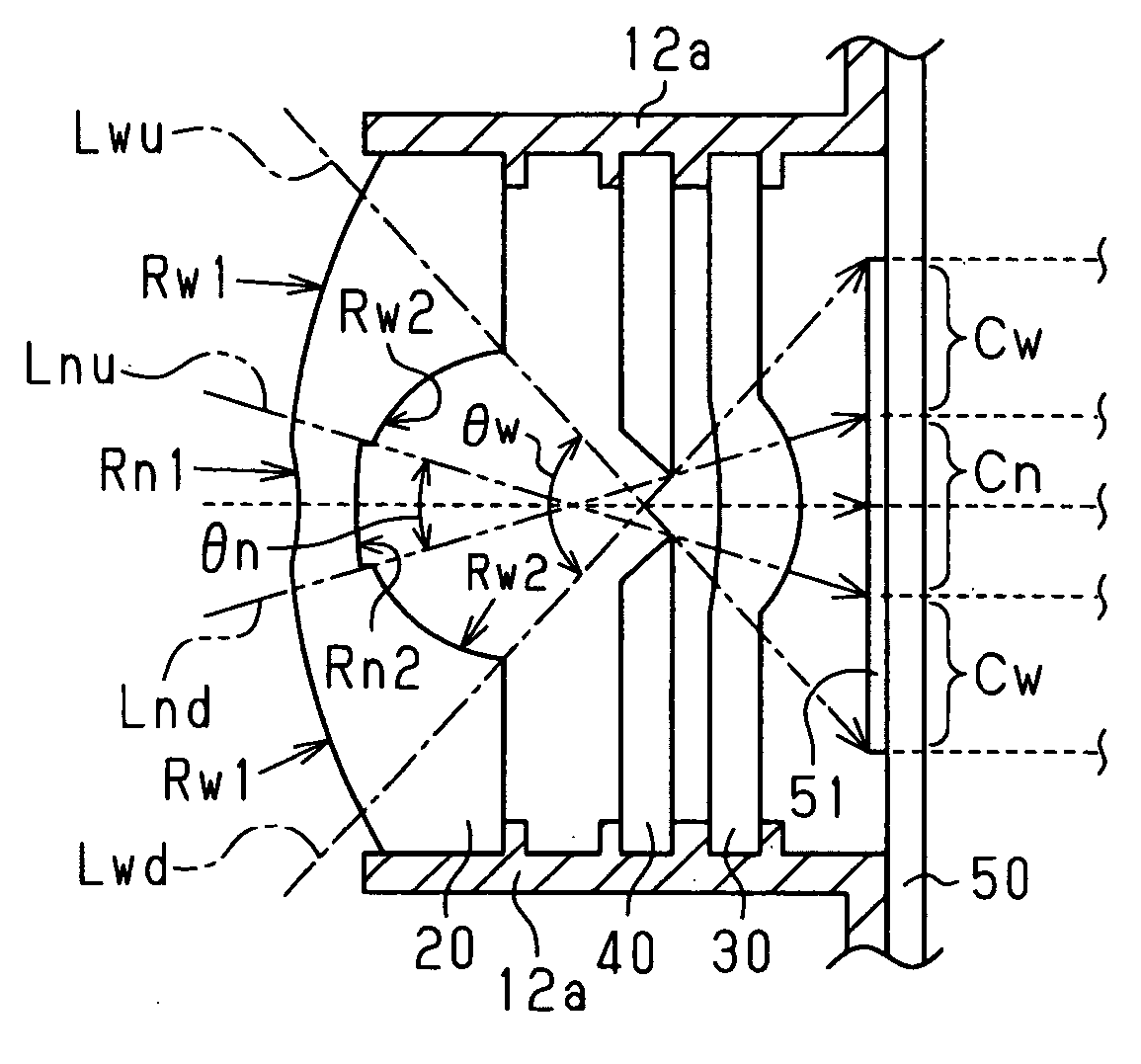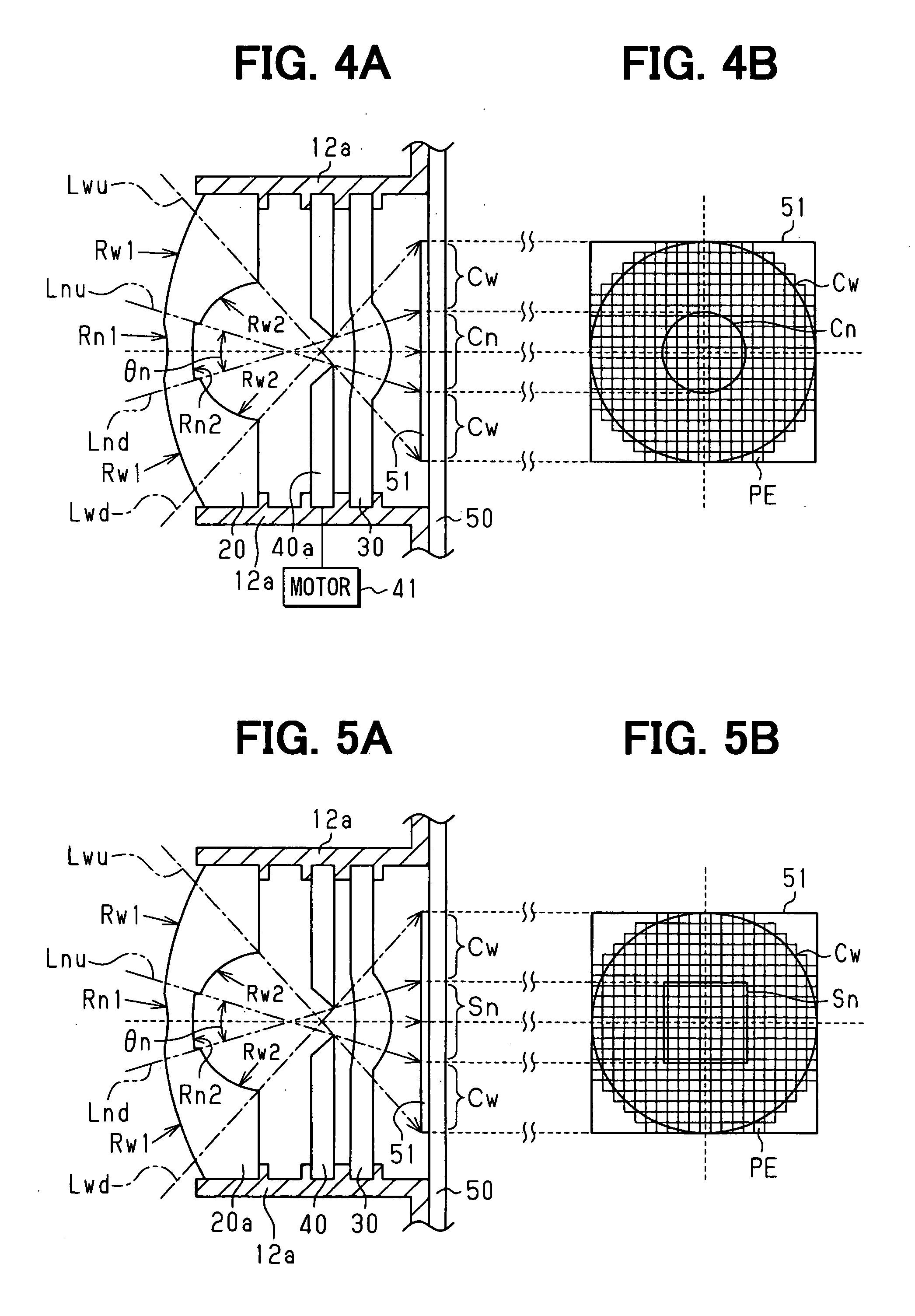Imaging module
- Summary
- Abstract
- Description
- Claims
- Application Information
AI Technical Summary
Benefits of technology
Problems solved by technology
Method used
Image
Examples
first embodiment
[0046] Hereafter, a first embodiment of an imaging module concerned with this invention will be described with reference to FIGS. 1 to 3.
[0047] In this embodiment, as will be described in detail below, as an optical system for forming two kinds of light images, a light image of the careful looking region and that of its surrounding region, a fish-eye lens and a convex lens for converging to form the light images having passed through the fish-eye lens on the imager are arranged inside the lens-barrel, more specifically, the two lenses are arranged along the cylinder direction. Then, this fish-eye lens is formed in such a way that the sectional radius of curvature of its central part is smaller than the sectional radius of curvature of the peripheral part, whereby suitable compatibility between imaging characteristics required for the careful looking region and for its surrounding region, respectively, is intended to be achieved.
[0048]FIG. 1 shows one example of how the imaging sys...
second embodiment
[0066] Next, a second embodiment of the imaging module concerned with this invention will be described with reference to FIGS. 4A and 4B, focusing on several points different from the first embodiment. FIG. 4A shows an internal structure of this second embodiment viewed from the side direction; FIG. 4B schematically shows an imaging mode viewed from the front direction. In FIGS. 4A and 4B, the same constituents as constituents shown in FIGS. 1 to 3 are designated with the same reference numerals, respectively, and redundant explanations of these constituents will be omitted.
[0067] As shown in FIGS. 4A and 4B, the imaging module of this embodiment has a configuration equivalent to the first embodiment shown in FIGS. 1 to 3. Note that, in this embodiment, the optical system is designed to be equipped with an auto iris 40 for automatically adjusting the amount of incident light on the convex lens, interposed between the fish-eye lens 20 and the convex lens 30, according to variation i...
third embodiment
[0072] Next, a third embodiment of the imaging module concerned with this invention will be described with reference to FIGS. 5A and 5B, focusing on several points different from the first embodiment. FIG. 5A shows an internal structure of this third embodiment viewed from the side direction; FIG. 5B schematically shows an imaging mode on the imager viewed from the front direction.
[0073] As shown in FIGS. 5A and 5B, the imaging module of this embodiment has a configuration equivalent to the first embodiment shown in FIGS. 1 to 3. Note that, in this embodiment, as shown in FIGS. 5A and 5B, the area where the sectional radius of curvature of the fish-eye lens 20a is formed smaller than the sectional radius of curvature of the peripheral part other than the area concerned is formed in the shape of a rectangle when viewed from the front.
[0074] According to this third embodiment of the imaging module explained above, effects as will be described below can newly be acquired, in addition...
PUM
 Login to View More
Login to View More Abstract
Description
Claims
Application Information
 Login to View More
Login to View More - R&D
- Intellectual Property
- Life Sciences
- Materials
- Tech Scout
- Unparalleled Data Quality
- Higher Quality Content
- 60% Fewer Hallucinations
Browse by: Latest US Patents, China's latest patents, Technical Efficacy Thesaurus, Application Domain, Technology Topic, Popular Technical Reports.
© 2025 PatSnap. All rights reserved.Legal|Privacy policy|Modern Slavery Act Transparency Statement|Sitemap|About US| Contact US: help@patsnap.com



